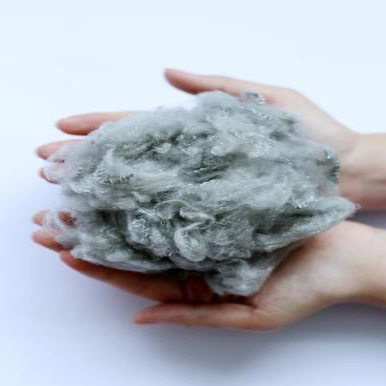Colour uniformity is a challenge for the PVC plastic parts manufacturing industry. Ensuring that the colour of the manufactured parts is consistent throughout their useful life and also between one production batch and another is a condition that requires specialized formulations, machinery and processes. This zero defects target implies a colour uniformity in terms of colour adjustment and its repeatability between two production batches.
Compounders must meet the requirements of their customers, who demand an exact colour in many of their applications. It is not only for reasons of branding, but also of safety, since colour coding is especially important, for example, in the field of electrical cables and circuits. There are several cases in which colour uniformity is decisive. Poly Fill Fiber Fill

The colouring of plastic parts can be done through pigments or masterbatch, but the use of pigments can lead to colour variations between production batches. However, masterbatch provides a stable solution for maintaining colour uniformity and a fast and highly efficient way to adjust the colour to the original specification without the need for further adjustments while preparing the manufacture of the end product.
Obtaining consistency in masterbatch mixtures
At Delta Tecnic we carry out a rigorous quality control process on each masterbatch mixture we produce to ensure that the colour is consistent with no deviations from the standard defined with our customer. If any colour difference is detected, the mix is adjusted to ensure it is uniform. The proper dispersion of pigments is also essential to achieve colour uniformity, minimizing variations between different batches.
By switching from pigments to masterbatch, compounders can obtain several benefits. These include almost entirely eliminating defects related to colour uniformity and adjustment at the start of production.
All this translates into a notable improvement in the efficiency of the production line, a reduction in the amount of waste and a decrease in associated costs. These advantages allow compounders to be more competitive in the market and increase their productive capacity. In many cases it can enable them to gain access to new markets where the colour requirements would previously have been beyond their capabilities since the use of pigments does not lead to the colour uniformity required by these customers.
In short, colour uniformity is a major concern in the manufacture of plastic parts. Working with masterbatch makes it possible to guarantee colour stability from one production batch to another and to reduce the number of non-compliant products. Furthermore, proper dispersion of pigments is essential to achieve colour consistency. Compounders working with masterbatch can significantly improve their efficiency and competitiveness in the market.
Contributing to waste reduction and sustainability
The importance of colour consistency in the manufacture of plastic parts is not only limited to the field of safety and branding, but also has a significant impact on the useful life of products. Inconsistent colour can lead to uneven appearance and loss of aesthetic value, which can lead to products being scrapped or replaced prematurely. Therefore, the colour uniformity and stability over time also contributes to sustainability and the reduction of waste.
As a result, the use of masterbatch in the manufacture of plastic parts can have environmental benefits. By reducing the amount of non-compliant product, compounders also reduce the amount of waste generated, as well as improve energy efficiency in their production by shortening the preparation time and eliminating non-compliant internal product due to colour deviations.
Another contribution to sustainability is its role in the recycling industry since custom-designed masterbatches can be used to improve the final appearance of a recycled material in terms of colour.
Ultimately, colour consistency is just one of the many aspects that manufacturers of plastic parts must consider in order to produce high-quality, sustainable products. The use of masterbatch is a valuable tool to achieve greater efficiency in production, a reduction in waste and an improvement in the quality of the final product. By keeping the focus on quality and sustainability, the plastic parts manufacturing industry can continue to innovate and move towards a more sustainable future.
European Plastic Product Manufacturer
Part of Rapid News Group

Flame Retardant Polyester Fiber © Rapid Plastics Media Ltd. A Rapid News Group Company. All Rights Reserved